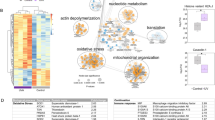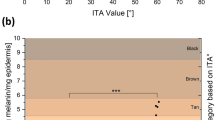Abstract
Administration of the photoactivable compound chlorpromazine (CPZ) to SKH-1 hairless mice via their drinking water (CPZ, 0.01%) significantly reduced the rates of accumulation and yields of squamous cell carcinomas induced by long-term repeated exposures of these animals to solar UV radiation. This protective effect of CPZ was partially reversed in mice given a single injection of ethyl nitrosourea at birth. In in vitro studies, the presence of CPZ (0.2 mM) in mammalian cell cultures enhanced the yield of DNA single-strand breaks induced in the cells by exposure to monochromatic UVA radiation at 334 nm. Collectively, the results suggest that CPZ may exert antineoplastic effects against UV-induced skin tumours by the induction of DNA damage.
This is a preview of subscription content, access via your institution
Access options
Subscribe to this journal
Receive 24 print issues and online access
$259.00 per year
only $10.79 per issue
Buy this article
- Purchase on Springer Link
- Instant access to full article PDF
Prices may be subject to local taxes which are calculated during checkout
Similar content being viewed by others
Author information
Authors and Affiliations
Rights and permissions
About this article
Cite this article
Peak, M., Pfaff, M. & Peraino, C. Chlorpromazine reduces UV-induced squamous cell carcinogenesis in hairless mice and enhances UV-induced DNA damage in cultured cells. Br J Cancer 60, 220–222 (1989). https://doi.org/10.1038/bjc.1989.255
Issue Date:
DOI: https://doi.org/10.1038/bjc.1989.255



